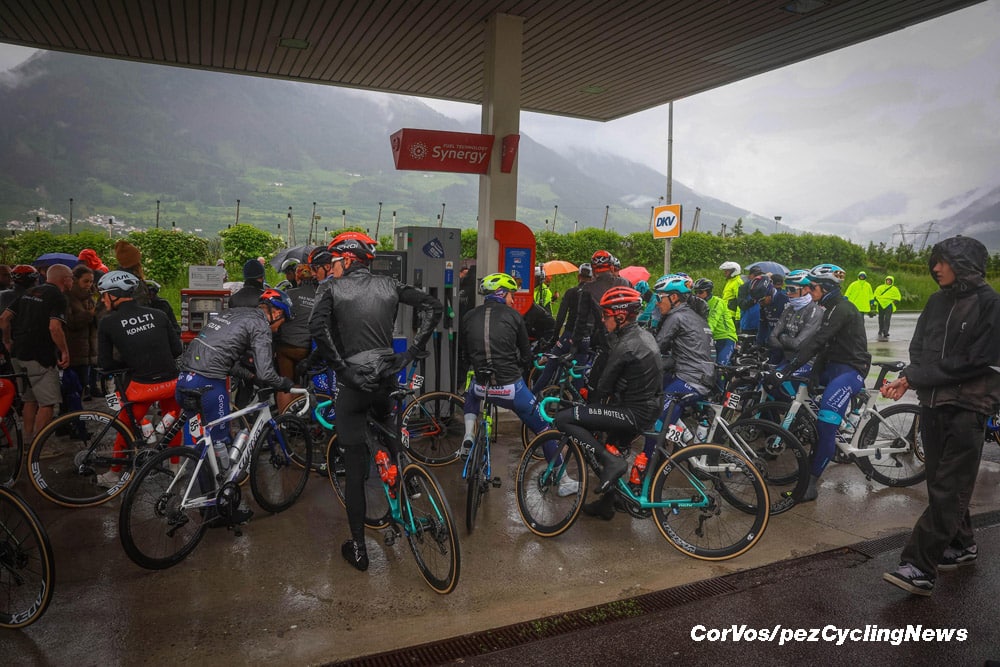
Santa Cristina Valgardena - Italy - cycling - cyclisme - radsport - wielrennen - The organisation has dabbled in climbing the Umbrail pass. Too dangerous for riders and followers The start has been moved to Spondigna - riders waiting at a Gasstation pictured during Giro d’Italia 2024 - stage 16 is now(121km) - 21/05/2024 - Photo: Luca Bettini/SCA/Cor Vos © 2024
There was chaos on Tuesday in Livigno before the start of stage 16 of the Giro d’Italia. No one knew what was happening: Would the stage start or not, or be shortened, or…?. Adam Hansen, the president of the CPA riders’ union, calls for change.
Due to the bad weather conditions of snow, freezing rain and extreme temperatures, it was decided, the insistence of the riders, to significantly shorten the stage. Although the race organisers were keen on canceling the climb of the Umbrail Pass. There was uncertainty for a long time about the route of the stage. The teams stated that they would not start the stage unless the pass was removed from the route. RCS Sport eventually, after much deliberation changed the route. It was decided to drive the riders to Lasa, on the other side of the Umbrail Pass, for an alternative start for a stage of 118 kilometres. All this was preceded by a lot of discussions. “The CPA contacted all stakeholders for the first time on the rest day to make a decision based on the weather forecasts for the sixteenth stage,” Hansen wrote about the Umbrail pass decision. “The riders therefore proposed to cancel the climb, so that they would not have to descend in two degrees and snow.”
“The riders wanted to race without having to stop because of the weather,” Hansen pointed out. “The riders unanimously agreed on this. This was then also communicated to the outside world. The CPA did its best, after an hour-long meeting, to convey this. It was clear that the Umbrail Pass was not suitable for cycling, as the local mountain pass was also closed by the local authorities due to heavy snowfall. If the riders had ridden over the Umbrail Pass, we would have had to put our foot down,” said Hansen. “To be clear: the peloton always had the intention to race, which is what ultimately happened. However, due to bad weather it was not possible to complete the original route. The temperature at the start was also around freezing point. If that doesn’t create an Extreme Weather Protocol, what will?”
The Giro organisers in the end decided to shorten the stage, but it took a very long time before there was clarity. “It is 2024: we must move towards a clear protocol in which all stakeholders understand and accept how we can safeguard the image of cycling,” Hansen want’s things to change. “With a ‘let’s see what happens’ approach, the riders should have taken shelter from the snow. That is not the solution.”





